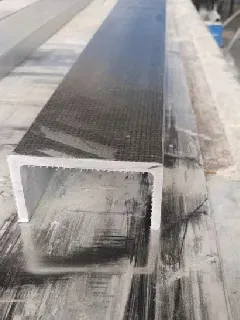loading...
- No. 9, Xingyuan South Street, Dongwaihuan Road, Zaoqiang County, Hengshui, Hebei, China
- admin@zjcomposites.com
- +86 15097380338
- Welcome to visit our website!
Innovative Prefabricated Handrails for Modern Construction Projects and Enhanced Safety Solutions
The Advantages of Prefabricated Handrails in Modern Construction
In the realm of modern construction and architectural design, aesthetics and safety are paramount considerations. A key element that often garners attention is handrails. Handrails are essential for ensuring safety, particularly in staircases, balconies, and walkways. Among the various types available, prefabricated handrails have emerged as a popular choice for builders and architects alike. This article delves into the numerous advantages of prefabricated handrails, highlighting why they are an excellent choice for various construction projects.
What are Prefabricated Handrails?
Prefabricated handrails are pre-manufactured railing systems designed for quick and easy installation. Typically constructed from materials such as steel, aluminum, and fiberglass, these handrails are produced in controlled factory settings, where they undergo rigorous quality checks. Once assembled, they are shipped to the construction site, ready for installation. This process significantly reduces the time and labor required on-site.
Safety First
One of the most significant advantages of prefabricated handrails is enhanced safety. These handrails are designed to meet strict building codes and safety standards, ensuring they provide reliable support for users. Prefabricated handrails undergo comprehensive testing to guarantee their sturdiness and durability. Using high-quality materials and advanced manufacturing processes, these handrails can withstand considerable weight and stress, making them an ideal choice for both residential and commercial applications.
Cost-Effectiveness
Prefabricated handrails offer a financially viable solution for construction projects. Due to the efficiencies of the manufacturing process, the production costs are often lower than for custom-built handrails. Additionally, the quick installation time reduces labor costs significantly. Builders can save money overall, making prefabricated handrails an attractive option when working within budget constraints.
Variety of Designs
prefabricated handrail

Another noteworthy advantage of prefabricated handrails is the wide range of design options available. Manufacturers often offer customizable solutions that allow architects and builders to select designs that suit their specific project requirements. Whether the aesthetic is modern, traditional, or industrial, prefabricated handrails come in various shapes, sizes, and finishes to match the desired look of the building. This versatility enables the seamless integration of handrails into different architectural styles, enhancing the overall visual appeal.
Sustainability and Environmentally Friendly Options
As construction practices shift towards sustainability, the demand for eco-friendly materials has increased. Many manufacturers of prefabricated handrails are now focusing on sustainability, using recycled materials and employing eco-conscious production techniques. This shift not only reduces waste but also appeals to environmentally conscious consumers. Choosing prefabricated handrails made from sustainable materials can significantly lower a project’s environmental impact, aligning with modern construction goals aimed at promoting green building practices.
Ease of Installation
The installation process for prefabricated handrails is straightforward and efficient. Because these handrails are preassembled and designed for easy attachment to existing structures, they can be installed quickly, reducing downtime on construction sites. This is particularly advantageous in projects with tight timelines, allowing for faster project completion without compromising safety standards.
Maintenance and Durability
Prefabricated handrails are designed to be low-maintenance, requiring minimal upkeep over their lifespan. Most materials used, such as aluminum and stainless steel, are resistant to corrosion and weathering, making them suitable for both indoor and outdoor applications. This durability ensures that the handrails will retain their strength and appearance over time, providing a long-lasting solution for safety and aesthetics.
Conclusion
In summary, prefabricated handrails represent a smart choice in today’s construction landscape, offering a combination of safety, cost-effectiveness, design versatility, and ease of installation. They align with the growing emphasis on sustainability and efficiency in the building industry, making them suitable for a wide range of applications. As buildings continue to evolve in complexity and design, prefabricated handrails provide a reliable solution that meets the modern demands of both builders and occupants. Whether for a simple home renovation or a large-scale commercial project, prefabricated handrails are undeniably a valuable asset to any construction endeavor.
-
The Rise of FRP Profiles: Strong, Lightweight, and Built to LastNewsJul.14,2025
-
SMC Panel Tanks: A Modern Water Storage Solution for All EnvironmentsNewsJul.14,2025
-
GRP Grating: A Modern Solution for Safe and Durable Access SystemsNewsJul.14,2025
-
Galvanized Steel Water Tanks: Durable, Reliable, and Ready for UseNewsJul.14,2025
-
FRP Mini Mesh Grating: The Safer, Smarter Flooring SolutionNewsJul.14,2025
-
Exploring FRP Vessels: Durable Solutions for Modern Fluid HandlingNewsJul.14,2025
-
GRP Structures: The Future of Lightweight, High-Performance EngineeringNewsJun.20,2025
